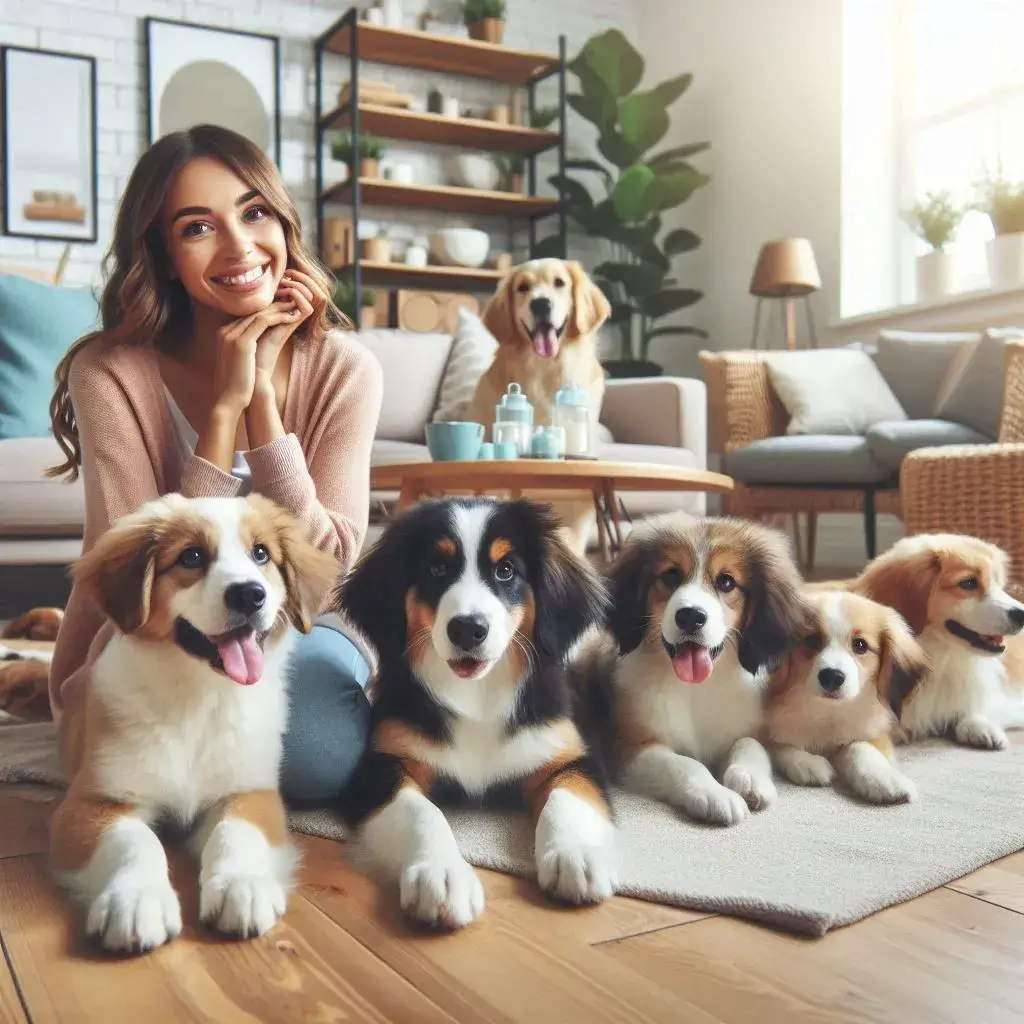Adopting a dog is a rewarding experience, but bringing multiple dogs into your home can add layers of complexity that require careful planning and consideration. Whether you’re adopting two dogs at once, adding a new dog to your existing pack, or adopting several dogs over time, successfully managing a multi-dog household takes effort, patience, and the right strategies. This comprehensive guide offers expert tips on handling multiple dog adoptions, ensuring that all your dogs live harmoniously together.
Understanding the Challenges of Multiple Dog Adoptions
Adopting multiple dogs brings many rewards, but it also presents unique challenges. Understanding these challenges is the first step to ensuring a smooth transition for your new dogs and maintaining peace in your home.
Increased Responsibility and Commitment
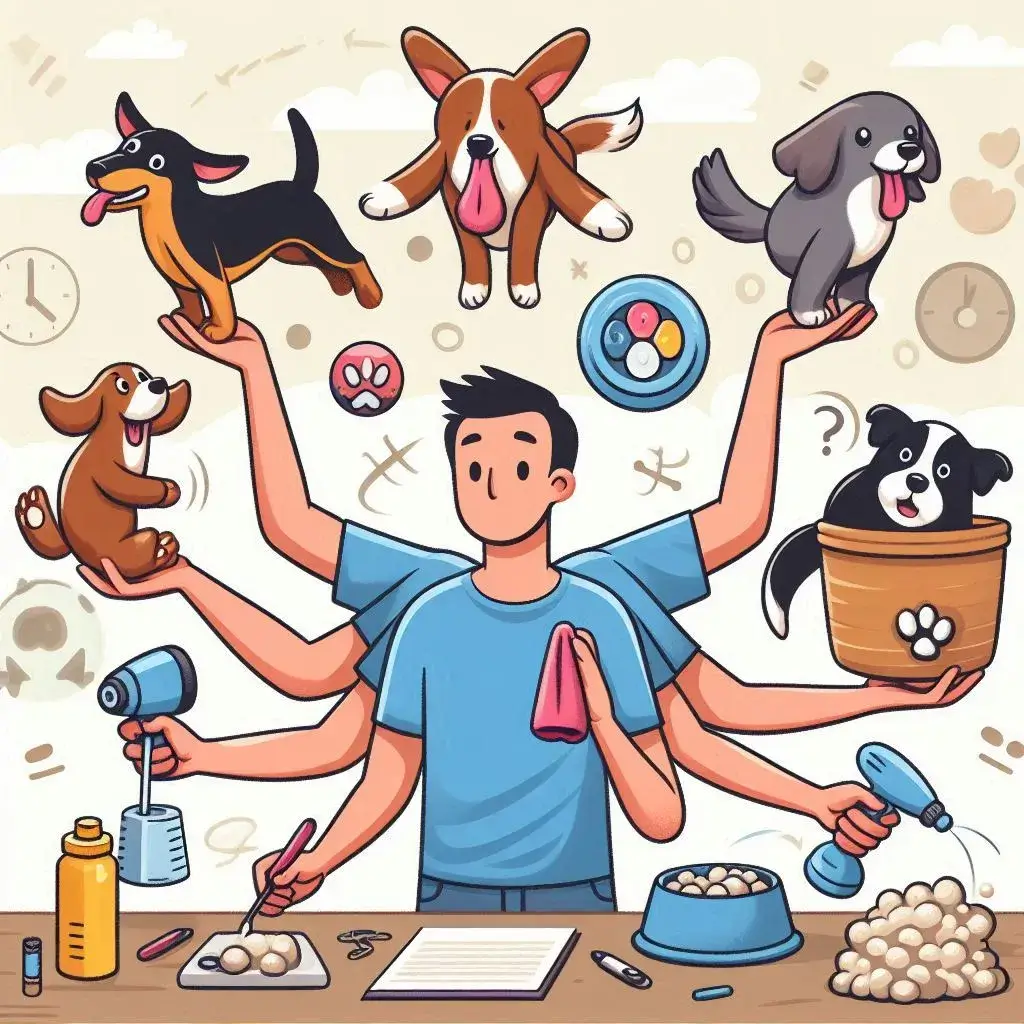
Caring for multiple dogs requires more time, energy, and resources than caring for just one. You’ll need to be prepared for:
- Time Commitment: Each dog will need individual attention, training, and exercise, which can be time-consuming, especially if they have different needs or energy levels.
- Financial Commitment: Vet visits, food, grooming, and other expenses multiply with each additional dog. It’s essential to budget accordingly.
- Space Considerations: Your living space must accommodate all the dogs comfortably, with enough room for them to move around, sleep, and play.
Managing Pack Dynamics
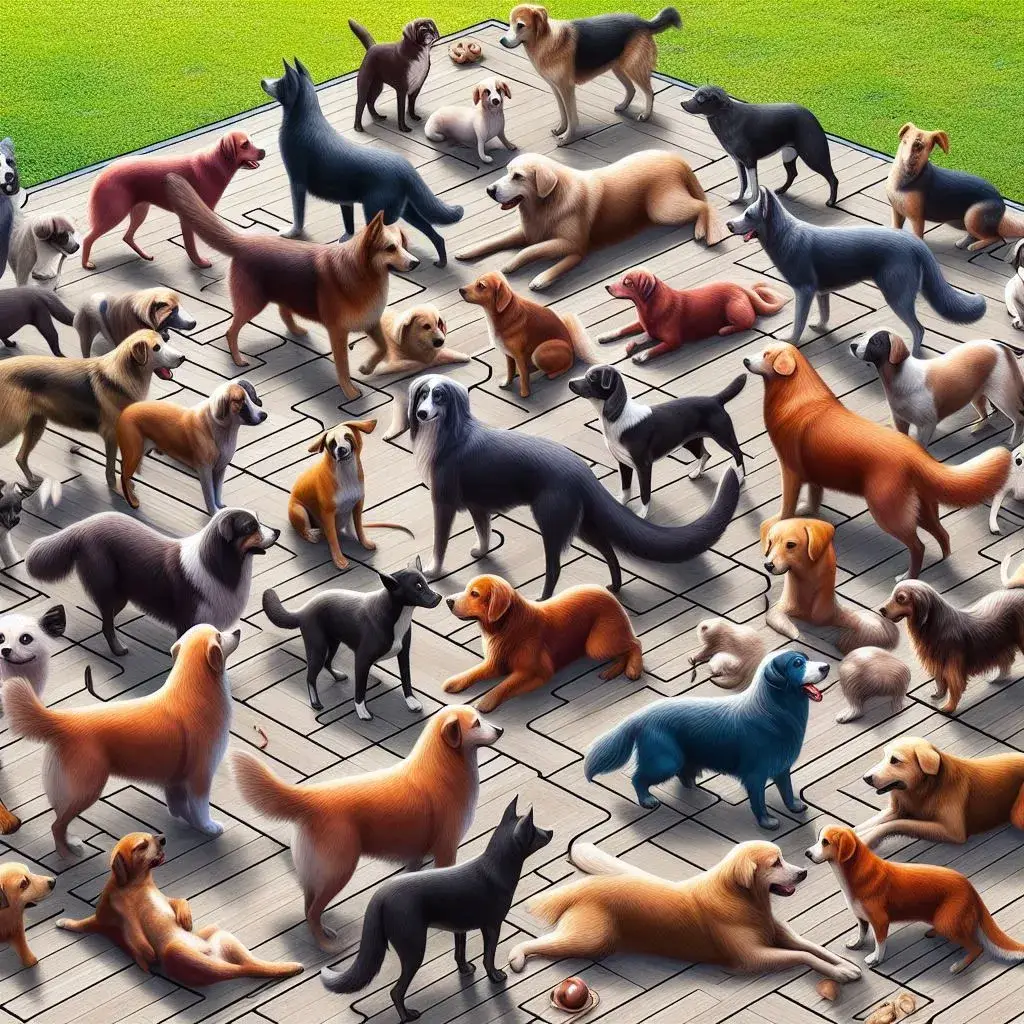
Dogs are social animals that naturally form packs, with each dog finding its place in the hierarchy. When introducing multiple dogs, you’ll need to manage pack dynamics carefully to prevent conflicts.
- Establishing Hierarchy: Dogs may naturally establish a hierarchy among themselves, but it’s crucial to supervise interactions and intervene if any dog becomes overly dominant or aggressive.
- Preventing Jealousy: Dogs can become jealous if they feel another dog is receiving more attention. Balancing your attention and affection among all dogs is essential.
Behavioral and Training Challenges
Each dog may have different behavioral issues or training needs, which can be challenging to address simultaneously.
- Consistency in Training: It’s vital to maintain consistency in training commands and routines for all dogs to avoid confusion and ensure they respond appropriately.
- Addressing Individual Needs: Some dogs may require more intensive training or socialization than others, especially if they come from different backgrounds or have different temperaments.
Preparing for Multiple Dog Adoptions
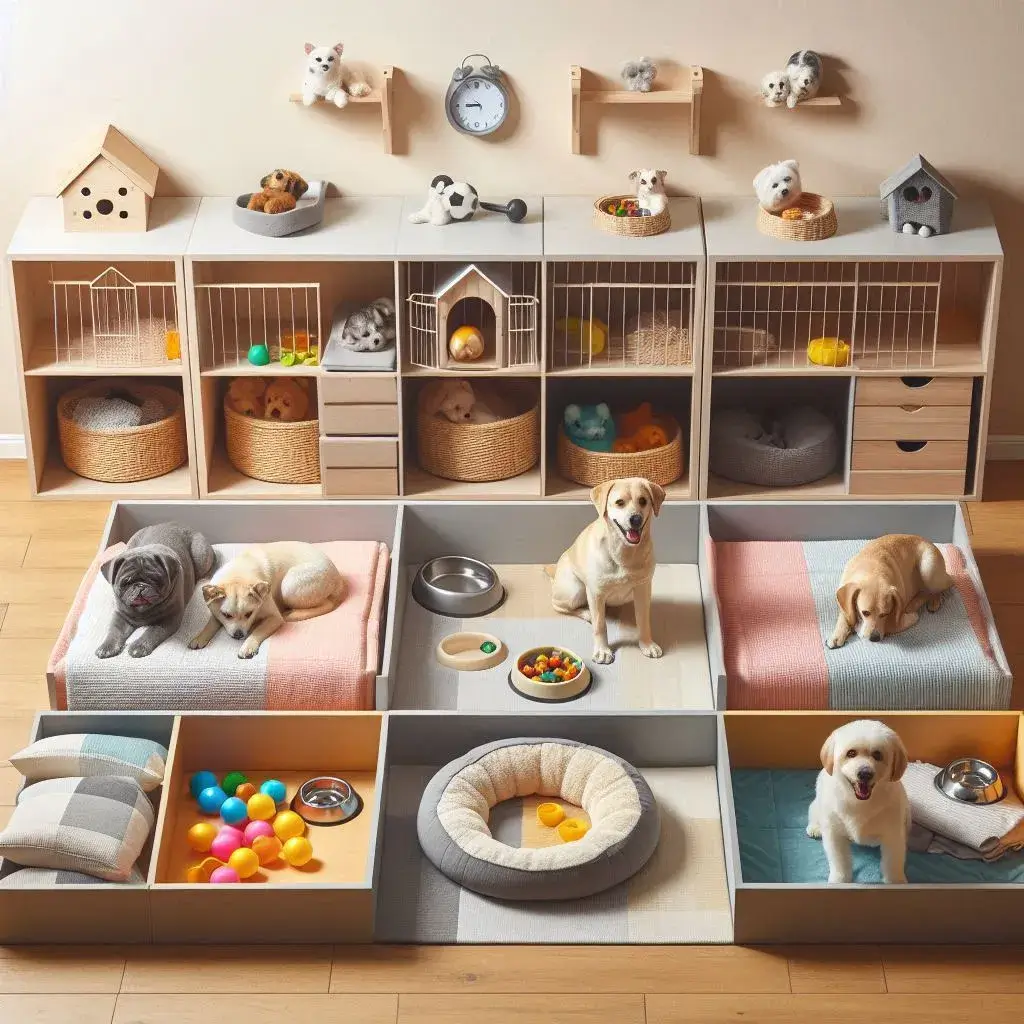
Preparation is key to successfully managing multiple dog adoptions. Here’s how to get ready for the arrival of your new furry family members.
Assessing Your Readiness
Before adopting multiple dogs, take the time to assess your readiness and ensure you’re prepared for the responsibility.
Evaluating Your Lifestyle
Consider how your current lifestyle will accommodate multiple dogs. Think about your daily schedule, work commitments, and how much time you can realistically devote to caring for more than one dog.
Financial Preparedness
Multiple dogs mean higher costs for food, medical care, grooming, and other expenses. Ensure you have the financial resources to provide for all your dogs’ needs.
Creating a Safe and Comfortable Space
Your home should be a safe and comfortable environment for all your dogs. Proper preparation will help ease the transition.
Designating Separate Spaces
Set up separate spaces for each dog, especially during the initial introduction phase. This could include separate sleeping areas, feeding stations, and safe spaces where they can retreat if they need some alone time.
Dog-Proofing Your Home
Ensure your home is dog-proofed to prevent accidents and keep your dogs safe. Remove any hazardous items, secure trash cans, and ensure there’s no access to dangerous areas.
Stocking Up on Supplies
Stock up on all necessary supplies, including food and water bowls, beds, crates, toys, leashes, and grooming tools. Having these ready before your new dogs arrive will make the transition smoother.
Planning the Introduction Process
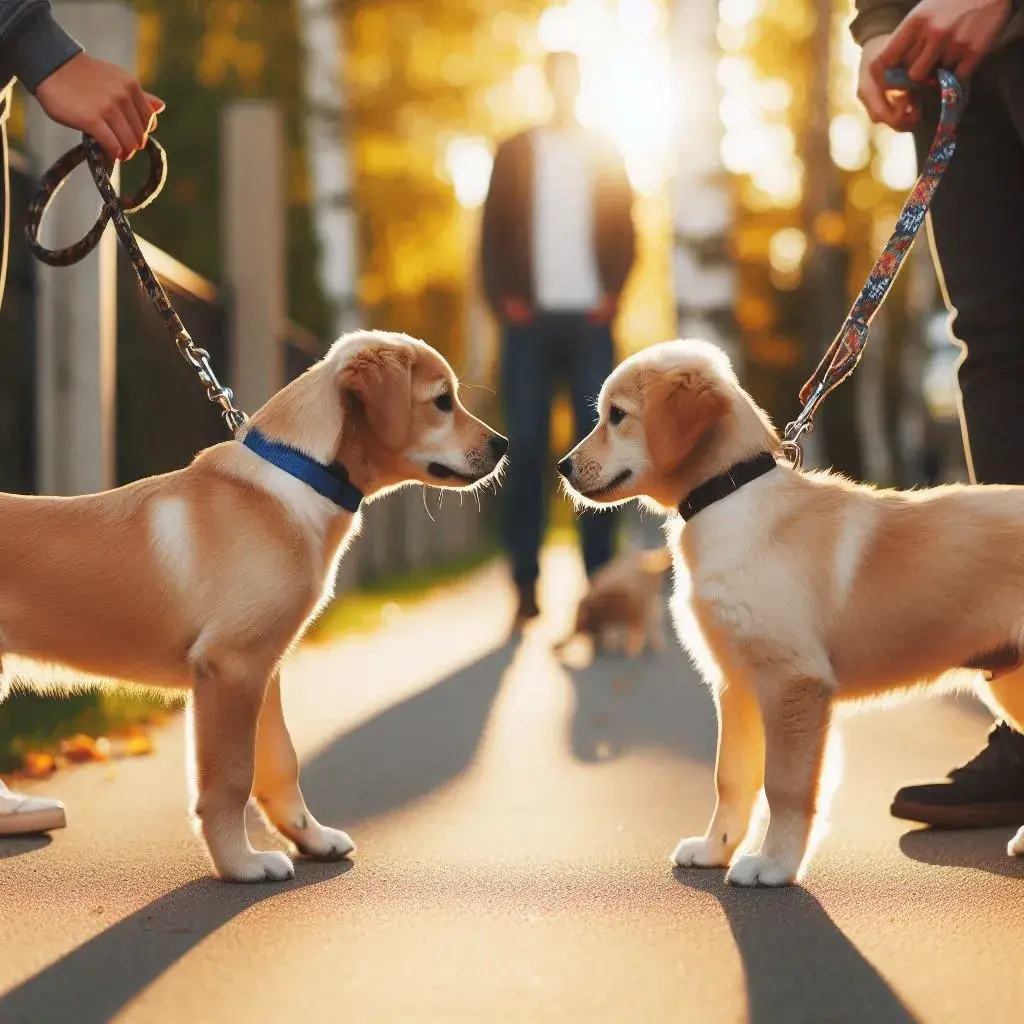
The introduction process is crucial when bringing multiple dogs into your home. A careful, controlled introduction helps prevent conflicts and sets the stage for positive relationships.
Introducing Dogs in Neutral Territory
Whenever possible, introduce the dogs in a neutral territory where none of them feels territorial. A quiet park or a friend’s yard can be ideal for initial introductions.
Using Leashes for Control
Keep all dogs on leashes during the introduction to maintain control and prevent any aggressive behavior. Allow them to sniff and observe each other from a distance before gradually bringing them closer.
Monitoring Body Language
Pay close attention to the dogs’ body language during the introduction. Signs of tension, such as stiff posture, raised hackles, or growling, indicate the need to slow down the introduction process.
Gradual Integration
If the initial introduction goes well, start integrating the dogs into the same space gradually. Allow them to spend short periods together, supervised, before extending the time as they become more comfortable with each other.
Establishing a Routine in a Multi-Dog Household
A consistent routine helps all dogs feel secure and understand their place in the household. Establishing a clear schedule for feeding, exercise, training, and playtime is essential.
Feeding Schedules and Techniques
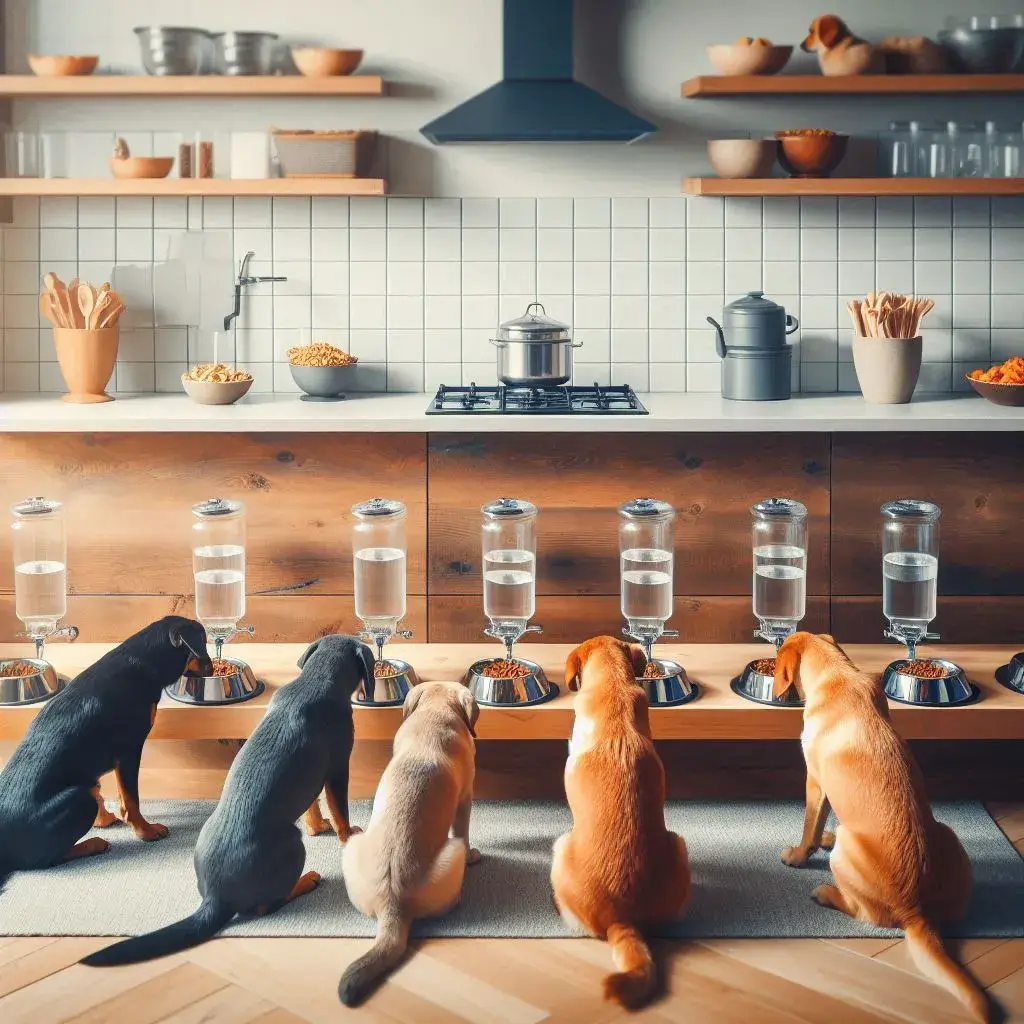
Feeding time can be a source of tension in a multi-dog household. To prevent conflicts, establish a clear feeding routine and use specific techniques to ensure each dog gets their share.
Feeding Separately
If your dogs are prone to food aggression or resource guarding, it’s best to feed them in separate rooms or crates. This prevents competition and ensures that each dog eats peacefully.
Using Timed Feedings
Stick to a regular feeding schedule where all dogs are fed at the same times each day. This routine helps prevent anxiety and ensures that all dogs know when to expect their meals.
Monitoring Food Intake
Pay attention to each dog’s food intake to ensure they’re eating the right amount and not over or under-eating. Adjust their portions as needed based on their age, weight, and activity level.
Exercise and Playtime
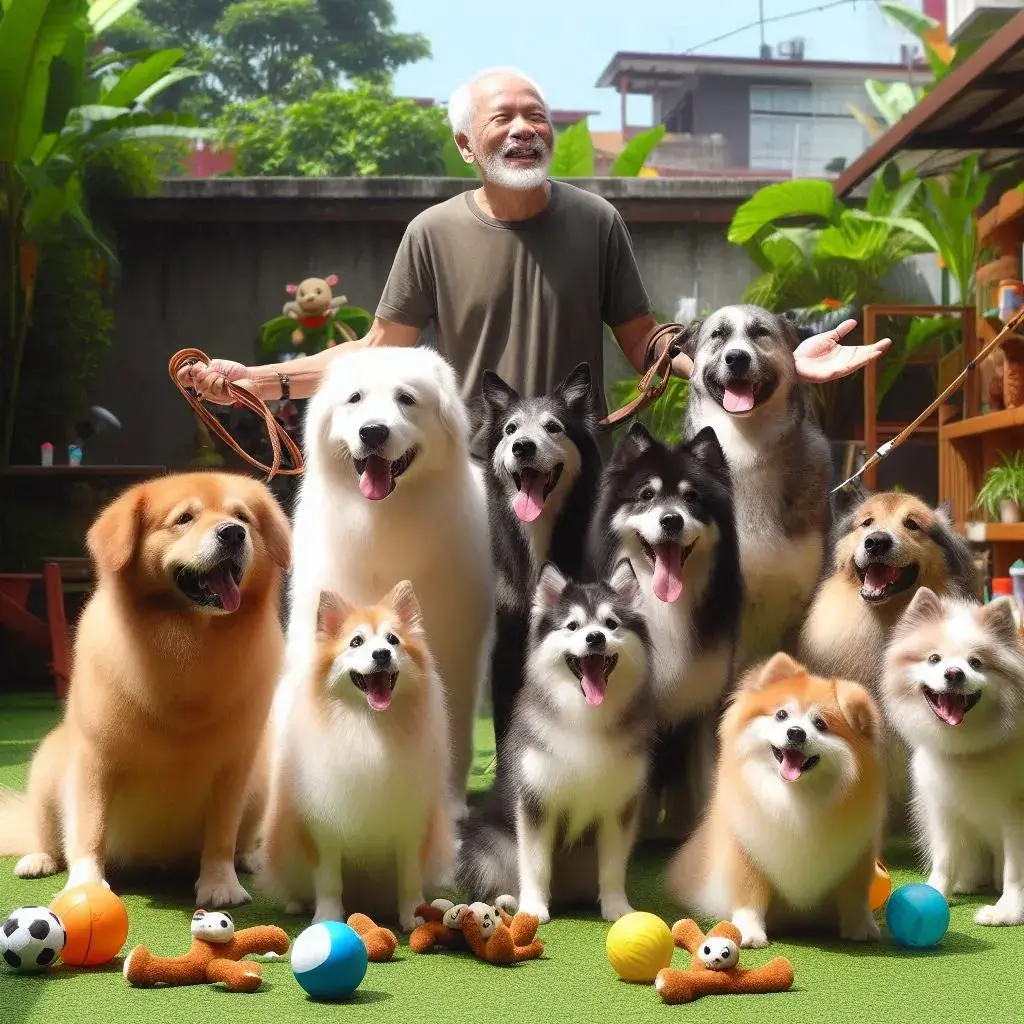
Regular exercise and playtime are vital for the physical and mental health of all your dogs. In a multi-dog household, it’s essential to ensure that each dog gets enough exercise.
Group Walks
If your dogs are well-behaved on a leash, group walks can be a great way to exercise them together. Use a sturdy leash splitter or multiple leashes to maintain control.
Individual Exercise
Some dogs may have different energy levels or exercise needs. Ensure that each dog gets individual exercise, whether it’s a run, a game of fetch, or a hike, to meet their specific requirements.
Supervised Playtime
Encourage your dogs to play together, but always supervise their interactions, especially in the early stages. Monitor their behavior to prevent rough play from escalating into aggression.
Training and Socialization
Training and socialization are critical components of managing a multi-dog household. Each dog needs to understand basic commands and social behaviors to coexist peacefully.
Consistency in Commands
Use consistent commands and cues for all dogs to prevent confusion. Ensure that each dog knows basic commands like sit, stay, come, and leave it.
Group Training Sessions
Incorporate group training sessions where all dogs are trained together. This helps reinforce their understanding of commands and teaches them to follow instructions even in a group setting.
Socialization with Other Dogs
Socializing your dogs with other dogs outside the household is also important. Regular visits to the dog park, playdates, or doggy daycare can help them learn to interact appropriately with unfamiliar dogs.
Creating a Calm Environment
A calm and stable environment is crucial for maintaining harmony in a multi-dog household. Here’s how to create a peaceful atmosphere for all your dogs.
Managing Noise Levels
Loud noises or chaotic environments can stress dogs, leading to tension and behavioral issues. Keep noise levels low, especially during feeding or resting times, to help your dogs stay calm.
Using Calming Aids
If your dogs are prone to anxiety, consider using calming aids such as pheromone diffusers, calming collars, or natural supplements. These can help create a more relaxed environment.
Establishing Rest Periods
Ensure that all dogs have quiet, designated areas where they can retreat for rest. Encourage them to take breaks after playtime or exercise to prevent overstimulation.
Addressing Common Issues in a Multi-Dog Household
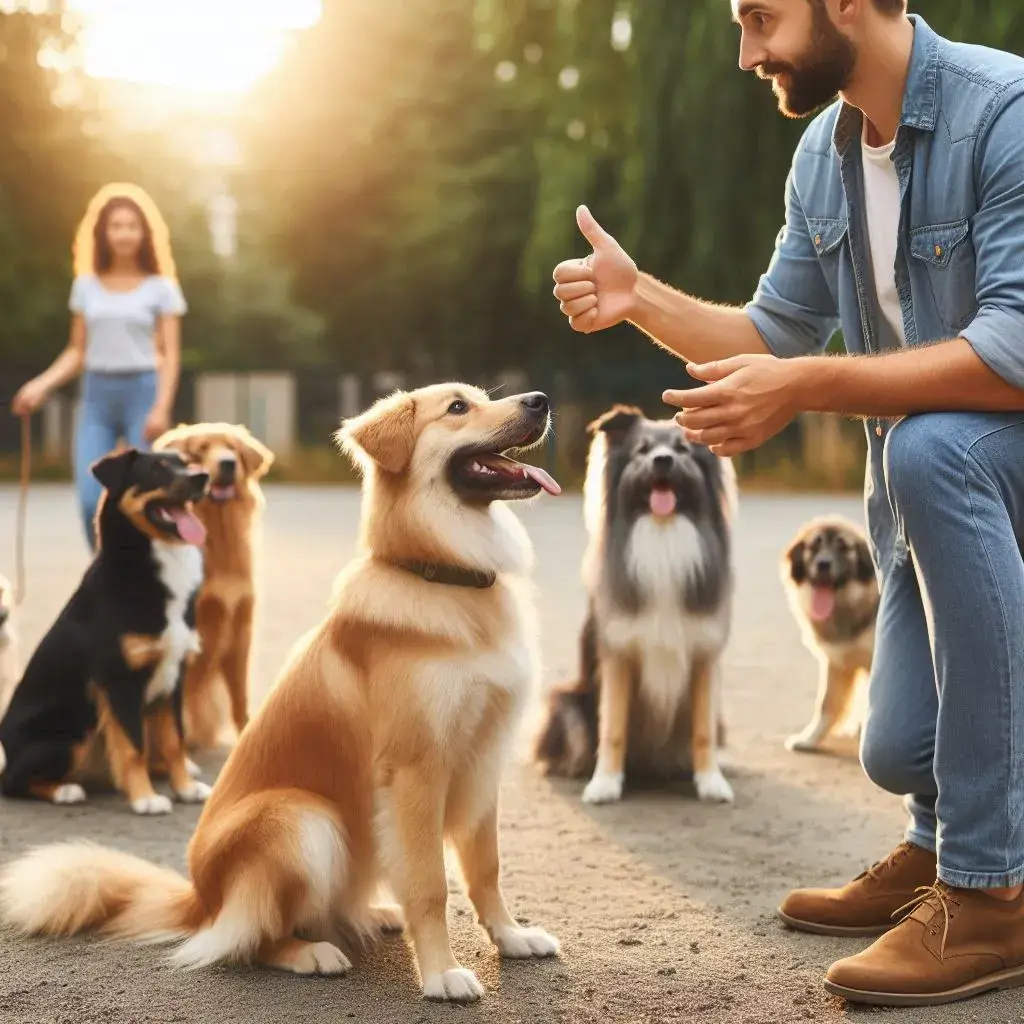
Even with careful planning, you may encounter challenges in a multi-dog household. Here’s how to address some of the most common issues.
Dealing with Aggression
Aggression between dogs can be a serious issue. Early intervention is key to preventing it from escalating.
Identifying Triggers
Identify the triggers that cause aggressive behavior, such as food, toys, or attention from you. Once you know the triggers, you can manage the environment to reduce the chances of aggression.
Positive Reinforcement Training
Use positive reinforcement to reward good behavior and discourage aggression. Reward your dogs for calm behavior and for following commands during potentially tense situations.
Seeking Professional Help
If aggression persists, consider seeking help from a professional dog trainer or behaviorist. They can provide tailored strategies to address aggression and restore harmony in your home.
Preventing Resource Guarding
Resource guarding occurs when a dog becomes protective of food, toys, or other items. It’s important to address this behavior early to prevent conflicts.
Managing Resources
Feed dogs separately and provide individual toys to reduce the chances of resource guarding. Avoid leaving high-value items like bones or chews out when the dogs are unsupervised.
Training Commands
Teach commands like “leave it” and “drop it” to help manage resource guarding. Reward your dog when they relinquish an item or allow another dog to approach without showing aggression.
Addressing Jealousy and Competition
Jealousy and competition for your attention can lead to tension among dogs. Ensuring that each dog feels equally loved and valued is key to preventing these issues.
Equal Attention
Make a conscious effort to give each dog equal attention. Spend individual time with each dog, offering one-on-one playtime, grooming, or training sessions.
Positive Interactions
Encourage positive interactions between your dogs by rewarding them for calm and friendly behavior towards each other. Use treats, praise, and play to reinforce these interactions.
Avoiding Favoritism
Avoid showing favoritism, as this can lead to jealousy and resentment among dogs. Treat all dogs fairly and provide consistent affection and attention.
Maintaining Harmony in the Long Term
Ensuring long-term harmony in a multi-dog household requires ongoing effort and commitment. Here’s how to maintain a peaceful environment for all your dogs.
Regular Veterinary Care
Regular veterinary care is essential for keeping all your dogs healthy and happy. Schedule routine check-ups, vaccinations, and preventative care for each dog.
Monitoring Health and Well-being
Pay attention to each dog’s health and well-being. Look for changes in behavior, appetite, or energy levels, and address any concerns promptly with your vet.
Dental Care
Don’t overlook dental care, which is crucial for preventing dental disease. Brush your dogs’ teeth regularly and provide dental chews or toys to promote oral health.
Ongoing Training and Socialization
Training and socialization should be ongoing processes, not just during the initial adjustment period.
Reinforcing Commands
Continue to reinforce basic commands and good behavior throughout your dogs’ lives. Regular training sessions help keep their skills sharp and ensure they continue to follow rules.
Social Outings
Maintain regular social outings to keep your dogs well-socialized. Dog parks, group walks, or playdates can help them stay comfortable around other dogs and new environments.
Adapting to Changes
Changes in the household, such as the addition of a new dog, a move, or changes in routine, can affect pack dynamics. Be prepared to adapt and manage these changes.
Introducing New Dogs
If you’re adding another dog to your household, follow the same careful introduction process used for your initial adoptions. Monitor interactions closely and provide extra supervision during the adjustment period.
Adjusting Routines
Changes in routine, such as work schedules or living arrangements, may require adjustments in how you manage your dogs. Ensure that each dog continues to receive the attention, exercise, and care they need.
Frequently Asked Questions About Handling Multiple Dog Adoptions
Is it better to adopt two dogs at once or separately?
Adopting two dogs at once can be beneficial if they are compatible and already bonded, as they can provide companionship for each other. However, adopting separately allows you to focus on each dog’s individual needs and ensures a smoother transition for each new addition.
How do I know if my dogs are getting along?
Signs that your dogs are getting along include relaxed body language, playfulness, and sharing space without tension. If your dogs willingly interact, play together, and show no signs of aggression, they’re likely to develop a positive relationship.
What should I do if my dogs start fighting?
If a fight breaks out, avoid physically intervening, as this can lead to injury. Instead, use a loud noise, like clapping or a whistle, to distract the dogs and separate them safely. Address the cause of the fight and seek help from a professional trainer if needed.
How can I prevent my dogs from becoming jealous of each other?
Prevent jealousy by giving each dog equal attention and creating positive associations with sharing your time. Encourage and reward calm behavior when you’re interacting with another dog and ensure each dog feels valued.
What should I consider before adopting a third dog?
Before adopting a third dog, consider the dynamics between your current dogs and whether they can handle another addition. Ensure you have the time, space, and resources to care for an additional dog, and carefully plan the introduction process.
Can I train all my dogs together, or should I train them separately?
While group training sessions can be beneficial, it’s often best to start with individual training to ensure each dog understands commands. Once each dog is comfortable with basic commands, you can incorporate group training to reinforce their skills and teach them to respond in a multi-dog environment.
Conclusion
Handling multiple dog adoptions is a rewarding experience that comes with its own set of challenges. With careful planning, consistent training, and a commitment to maintaining harmony, you can create a loving and peaceful environment where all your dogs thrive. By following the tips in this guide, you’ll be well-equipped to manage a multi-dog household and enjoy the joy and companionship that each dog brings to your life.
